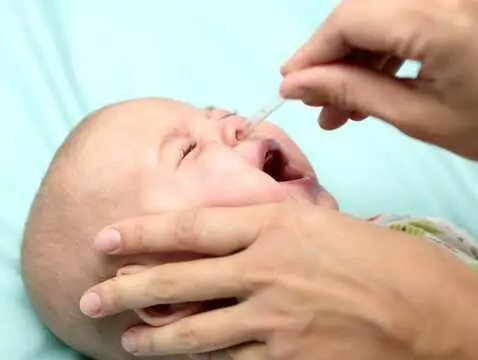Hypertrophy of the palatine tonsils and the pharyngeal tonsil is a problem that particularly affects children - younger and older. In order for a diagnosis to be made well, an appropriate diagnostic procedure is required to confirm or rule out suspicions of pathology. There are a number of examinations that can be used, but not all of them are sufficiently reliable, the reason for which may be, for example, the young patient's unwillingness to cooperate with the doctor.
Fiberoscopy
Another type of examination that does not require the cooperation of the patient is transnasal fibroscopy, which is highly accurate. This makes it possible to determine the precise location of the lesion, as well as to determine the degree of obstruction. In addition to the above-mentioned observations, fibroscopy can be successfully used to diagnose dyspnoea and voice disorders. Thanks to this examination procedure, abnormalities such as laryngeal diaphragm, laryngeal flaccidity and papillomatosis can be observed as early as infancy, giving a much greater chance of cure - through early diagnosis and therapy [5]. The age of the patient does not matter much with this method - so it can be performed in any age group.
FNF and LNX
Many different methods can be used to diagnose tonsillar hypertrophy, but not all are sufficiently reliable when the patient is a young child.
FNF, which is an examination with a nasopharyngoscope, and LNX, which is a lateral X-ray of the nasopharynx, are the two most common diagnostic methods used in the pre-operative period. Why? Which method is more diagnostically effective?
FNF is a painless and highly authoritative examination, but it requires specific conditions and appropriate equipment (endoscope). An inconsistency that can be expected during the examination is the interpretation of the results of the images obtained, depending on the assessing physician.
LNX is an examination frequently used by both paediatricians and ENT surgeons, due to its ease of performance and the high tolerance of the young patient to this type of diagnostic intervention. Although it is an examination with high accuracy and reflection of structures, it requires the patient to be immobile, which is sometimes not easy to achieve in children. In addition, it involves exposing the patient to a certain dose of radiation [6].
Depending on the age of the child, the child's attitude to the examination and the child's willingness to cooperate, an appropriate diagnostic method can be freely chosen to determine the development of pathologies or to exclude them.








